Last year I travelled to Tanjung Puting National Park in Kalimantan, Indonesia and enjoyed myself so much I knew that it would not be long again before I returned. Tantung Puting and especially the area around Camp Leakey at its entrance is, hands down, the world’s best place to see Orangutans in their natural habitat. The relative remoteness of the location, the absence of tourists (especially during the rainy season) and the “Heart of Darkness” journey up the Sekonyer River on your own personal klotok (houseboat) add to the overall experience of adventure.
Living in Asia means that getting to Tantung Puting is not nearly as arduous as it would be for someone based in the US and Europe. For me it is a short, 4-hour hop down to Jakarta with an overnight stay followed by a mid-day flight to Pangkalan Bun in South East Kalimantan (Kalimantan is the southern half of the island of Borneo). This time I was able to take a direct flight and surprisingly the flight was on time – a rarity for domestic Indonesian flights.
My guide met me at the airport from where we made the short drive to the river port of Kumai. From here it was straight onto an 8m long klotok, a traditional Indonesian river boat, on which my crew of four was waiting (boat driver, guide, cook, boat boy). The first image below shows the klotok moored up against the dock at Camp Leakey and the second as it motors down a small tributary towards the park. As you can see, the klotok that I used is fairly small and basic. A night the crew would lay down a mattress with some cheap sheets and rig a mosquito net over it. Most nights I slept under the waterproof canopy (where the rug is) but I spent one of the nights on the foredeck – that is until a torrential rain storm sent me scurrying for cover. The first image also shows the mattress drying in the sun the next day.
Leaving Kumai to a burning sunset, we motored down the Sekonyer River for four hours, largely in the dark, before securing the boat for the night to some half-submerged trees. The combination of the stifling humidity, a mattress that felt like it contained rocks and several extremely resourceful mosquitoes that managed to find their way through the netting, all made for a fitful night’s sleep even with the help of a sleep aid.
On subsequent nights we would moor closer to Camp Leakey but always seemingly in a swamp populated by millions of carniverous mosquitoes. If I turned on my laptop screen at night without the “protective” cover of a mosquito net, the light from the screen would quickly attract thousands of flying ants and beetles which invariably would seek to bed down in my hair. Eventually I took to eating my dinner in near total darkness but even then I would wear a cap to avoid having to repeatedly remove clumps of entangled insects. You will note that I have put “protective” in inverted commas. Despite my extreme care in entering into the net each night and an exhaustive search for even the smallest of holes (none found), I would still wake up each morning covered in bites.
At 4.30am, in almost chilly temperatures, we would be on our way, mindful that dawn was only half an hour away. As it became progressively lighter, the deep tannin colour of the river water would become visible.
Rivers that contain this tea coloured water are pollution free with the colour the result of decaying vegetation below the surface. This is in contrast to the main Sekonyer River which is now a latte colour, the result of mining runoff from upriver. My crew told me that 15-20 years ago all the rivers in this area were tannin coloured – a timely reminder of the many man-made threats that this fragile ecosystem faces.
On the first morning, we made our way up to Camp Leakey on the klotok with the rainforest on either bank and with the edges lined with walls of fringing Pandanus plants. All around was a cacophony of sound – insects, birds and loudest of all, the piercing calls from various primates, some visible although usually perched high in the canopy. Borneo is home to 5,000 tree species (vs. 34 native species in the UK) and the relatively small area that is Tanjung Puting National Park contains 220 bird species, 17 reptile species and 29 species of mammals. Among the most common are Proboscis Monkeys, the male species with its distinctive tubular, bulbous nose; and Long Tailed Macaques.
But the most distinctive calls and the ones that invariably would wake me pre-dawn were those from the Black-Handed Gibbons. I have seen this species on two occasions – once this year and once last year – and they really are the gold medallists when it comes to athletic agility between the trees of the rain forest.
The park’s headquarters are at Camp Leakey which was established in 1971 by Dr. Birute Galdikas and her then husband, Rod Brindamour. Along with her arguably more famous counterparts, Jane Goodall and Diane Fossey, Galdikas was selected and mentored by the famous anthropologist, Dr. Louis Leakey, to make long term studies of the three great primate species – in Galdikas’ case, the Orangutan. Galdikas’ accounts of her establishment of Camp Leaky and her study and breakthrough findings on the Orangutans are contained in her incredible autobiography, “Reflections of Eden”. Having read similar memoirs from Goodall and Fossey, I found Galdikas’ to be the most compelling, in part because of the horrific conditions that she endured when she first arrived. For the first two years, she essentially lived in a leech and snake infested swamp. Most of her days were spent chest deep in river/swamp water trying to catch glimpses of elusive Orangutans while at the same time seeking to avoid menacing poachers. How she survived, let alone found the will to continue her study is certainly hard to fathom.
At that time in Indonesia, Orangutans – especially juveniles and babies – were regularly kept as pets, often in dreadful conditions. Galdikas made it her mission to rescue these “imprisoned” Orangutans, rehabilitate them at Camp Leaky and then return them to the wild. The vast majority of Orangutans around the Camp Leakey area comprise Orangutans that have been either rehabilitated and released or are the offspring of rehabilitated Orangutans. As a result, they are generally comfortable in the presence of humans although the relative level of acceptance varies greatly as does each individual’s personality. In many ways they are like humans on this count: some gentle and passive, others aggressive and threatening. Indeed, the similarities with humans should not be surprising given only a 3% DNA difference. I took the image below when an Orangutan approached one of the few tourists while I was there. The Orangutan sat down in front of her and extended its figures. The girl responded and this was the unusual outcome – “I thee do wed?”.
The guides and the rangers that are based in the park know many of the individuals and their personalities and hence are invaluable for visitors in for example, gauging how close an approach an individual will tolerate. Orangutans are incredibly strong, can outrun a human over short distances and have teeth to rival any of Africa’s big cats, so it well worth heeding the advice of the guides. This image shows the dominant male of the Camp Leakey area, Tom, standing on his hind legs, sheltering from the rain. At 80kgs, 1.5m tall and with an arm span of more than 2m, he cuts a formidable presence and towers over the park’s females.
The males also sport distinctive black cheek pads and throat pouches which help to project their booming calls, audible over two miles away. The image below is again of Tom, his face wet from the rain.
Two of Galdikas’ key successes have been the establishment of Tantung Putting as a 415,000 hectare national park and the banning by the Indonesian government of Orangutans as pets. As a result of the latter, the practice of rehabilitation at Camp Leakey has been phased out.
Virtually everything we know about Orangutans today we know because of Galdikas’ studies. Before her arrival, it was not known e.g. whether they were social; whether they were herbivorous or frugiverous; whether they spent all their time in the trees or whether they came to the ground. Of special importance was her discovery that the females have an eight year birth cycle, the longest of any mammal and a key factor making the species vulnerable to extinction.
From the dock at Camp Leaky, an elevated boardwalk extends over a river forest before reaching dry land where a series of trails radiate out through the rain forest. Every day, one of the oldest and most cantankerous of the area’s Orangutans, Siswi, would park herself on the narrow boardwalk waiting to harass passers by. The only way to pass was to throw a banana or dried raman (noodles) onto a nearby tree in order to entice her to move. If you tried to walk over her, she would either grab you with a seriously strong kung-fu grip or worse yet, bite you. In effect she acts like a toll keeper. You want to pass? You give me food.
After our daily circumvention of Siswi, we would head into the rain forest in search of Orangutans. I had been told in advance that being the rainy season, with many of the forest’s 200 varieties of fruit trees in season, fewer Orangutans would be visible in the areas (c. a 1km radius) around Camp Leakey. However, as it turned out, Orangutan numbers appeared to be just as plentiful as when I had last visited in the dry season (May-October). Usually we would find an Orangutan or better still a mother with baby within 10-15 minutes of heading down a trail.
More often than not, they would descend from the canopy to check us out – usually in the hope that we had some food for them. As with my last visit, this allowed for liberal use of my 16-35mm wide-angle lens, mostly in conjunction with a little fill flash (-3 stops) and a soft box attached – often handheld. Light is at a premium in the rainforest and contrast levels usually high, necessitating the use of fill flash to open up the shadows on the Orangutans.
On one occasion I found a juvenile that was particularly active, using the numerous tree vines to swing between the trees. This allowed me to dial down the shutter speed to 1/25th second while using fill flash to ensure a degree of sharpness while still retaining a sense of motion.
Like Chimpanzees, Orangutans are adapt at making tools for various purposes. I have seen them break off long branches and use these as spears and weapons to beat away overly inquisitive wild Forest Hogs. Orangutans build temporary “nests” high in the trees, out of leaves, in which they spend the night. They also use this skill to assemble make-shift umbrellas when it rains.
Most surprising of all is the mimicking of human behaviour by the Orangutans around Camp Leaky. On a number of occasions I have seen them steal soap from the rangers that wash in the local rivers. The Orangutans will then proceed to lather up the hair on their arms – in the same manner that a human would shampoo his/her hair. Where they differ from humans is that they will often proceed to eat the soap, with amusing results, but with no apparent ill-effects.
For the most part, I searched for adult females with babies or juveniles. The babies are irresistibly cute but at the same time often comical in appearance with their out of control hairstyles and humorous facial expressions.
Young Orangutans spend most of their time clinging to and suckling from their mothers and when they do let go, they never venture more than a few feet away.
Even at a young age they are already extremely agile and dexterous and completely comfortable in the trees. I like the following two images in part for the mother’s hand which lends a sense of scale to her offspring.
On my last morning, I concentrated on smaller, non-primate species. As you would expect, insect life flourishes in the rain forest and I found one clearing, covered in ferns, to be especially rewarding. There I also found this beautiful Pitcher plant. With the background less than satisfactory, I switched to manual exposure mode using a small aperture and dialling up the flash output up to almost full power in order to render the background black and produce a studio like appearance.
While I have done plenty of macro photography underwater (more coming up over the next two months), for some reason I have done very little on land. But when this unidentified Dragonfly landed on a fern and remained relatively still for several minutes, I made over 40 images, of which this one is my favourite.
And so after four days it was time to head home. Unlike many of the world’s endangered species which are poached as bush meat or for use in traditional Chinese Medicine products, the overwhelming threat to the Orangutan comes from loss of habitat. Orangutans are only found in Malaysia and Indonesia, the majority on the island of Borneo which includes Kalimantan in the south. Borneo contains the world’s third largest rain forest, yet in the last 40 years, 40% of this or 40m hectares, equivalent to the size of Germany and Holland combined, has already gone. At the current pace of destruction, the United Nations Environmental Program estimates that less than 5% of this rainforest will be left in 15 years. Quite apart from the contribution this is having on global warming, it will, if left unchecked, lead to the virtual extinction of the Orangutan. Already there has been a precipitous decline in Orangutan numbers from as many as a quarter of a million a century ago, to just 15,000 today.
Initially the culprits were mining and logging but over the last 15 years, the clearing of the forest for palm oil plantations has been the big offender. Palm oil, of which Malaysia and Indonesia account for 90% of global supply, is the 2nd most consumed edible oil globally after soya bean oil and is used in a huge range of consumer products from cosmetics to packaged foodstuffs. In recent years, as the price of crude oil has risen, the demand for palm oil as a bio fuel has escalated, creating additional demand for palm oil acreage and in turn, rainforest clearance.
It is important not to have too blinkered a view on this issue because it needs to be remembered that the palm oil industry employs over 20m people in Indonesia and has helped lift many out of poverty. Consumption in rural Indonesia is heavily correlated with the palm oil price and this has proved a boon for a large chunk of rural Indonesia in recent years.
On the other hand the costs are just as, if not even higher: monoculture plantations result in massive forest and species destruction; indigenous people lose their land, their cultures and their land practices when plantations take over; it increases conflicts between wildlife and humans – plantations consider Orangutans as pests; plantation work in SE Asia often pays below the minimum wage and bribery and corruption are heavily associated with the expansion of palm oil plantations. Most plantation companies use fire to clear forests. This can have catastrophic consequences. ¾ of the huge fires started in Borneo in 1997/1998 were done so by palm oil companies and one of these fires alone killed a staggering 20,000 Orangutans, more than 10% of the entire global population at the time.
While palm oil is an extraordinarily versatile food product, it is a remarkably poor bio fuel. More carbon is released from the conversion of forests to palm oil plantations than saved through the replacement of fossil fuels with the palm oil produced. The equation is especially unbalanced when the plantation is located on peat swamp forest, increasingly the case in Kalimantan and off the charts when burning is the final step in clearing.
Today, palm oil plantations surround Tantung Putting National Park and are already encroaching on the Park’s boundaries and wild Orangutans throughout Indonesia and Malaysia are being hemmed into ever smaller areas. When you come away from a place like Tantung Putting, it is hard not to feel some sort of connection with our redheaded cousins. At the same time, I also cannot help wonder whether my 3 month old daughter will ever get to see these graceful giants of the forest in their natural habitat when she is grown up.
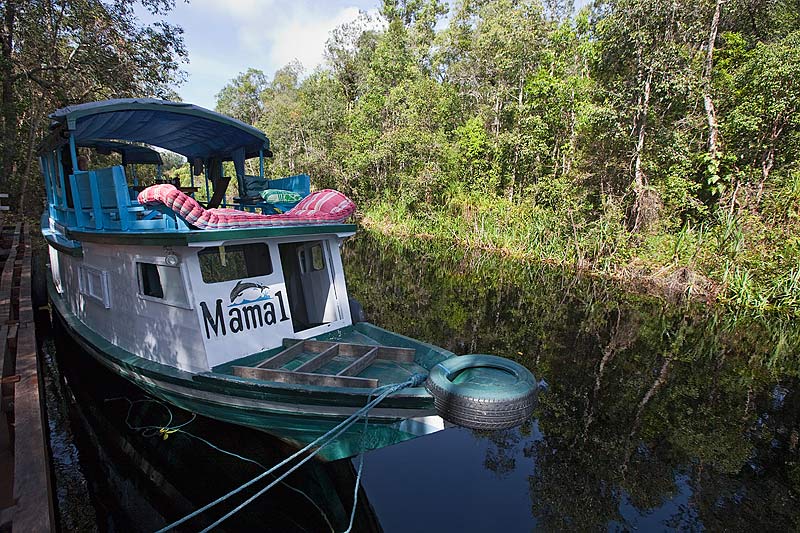
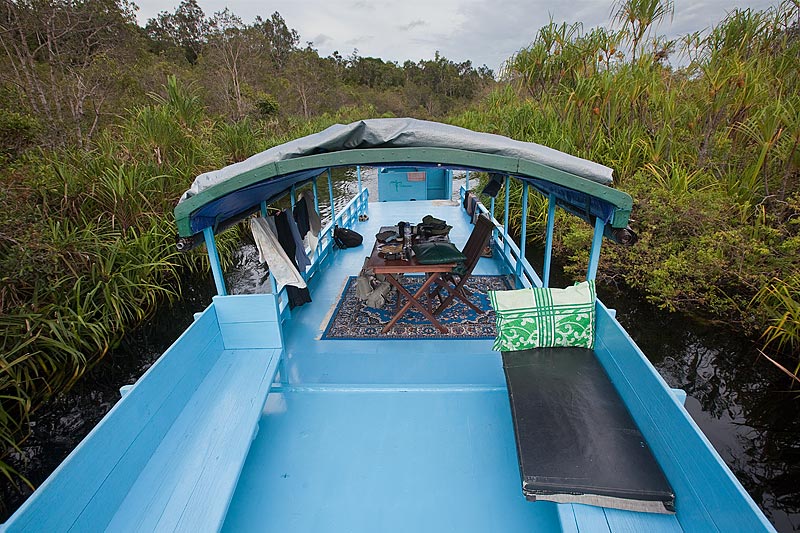
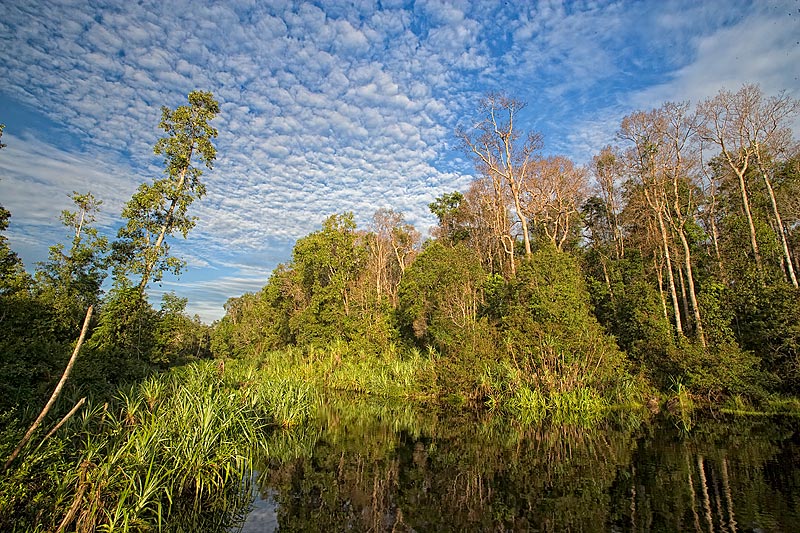
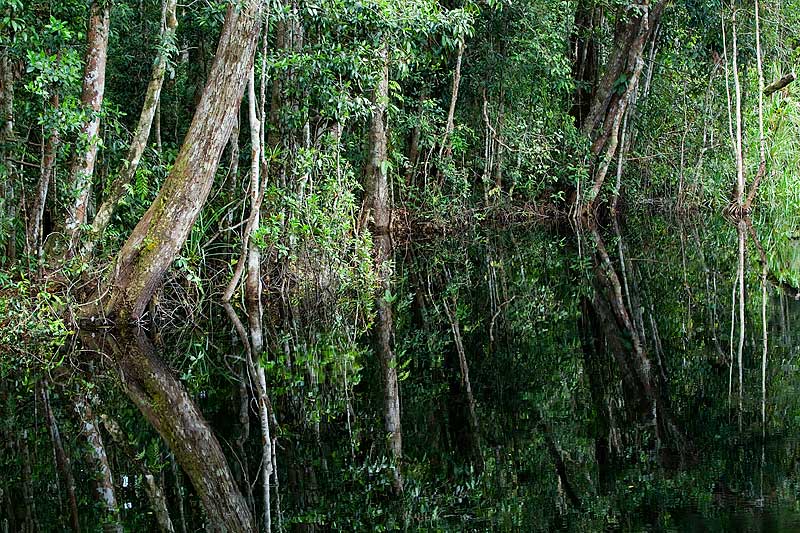
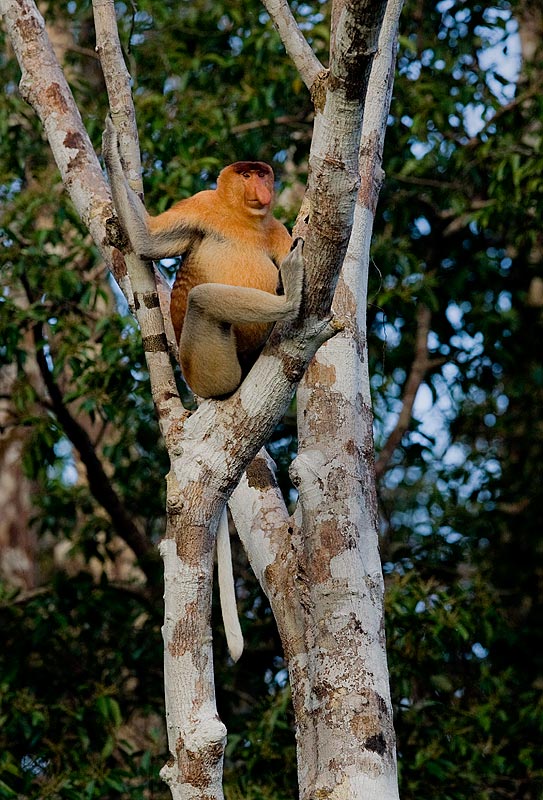
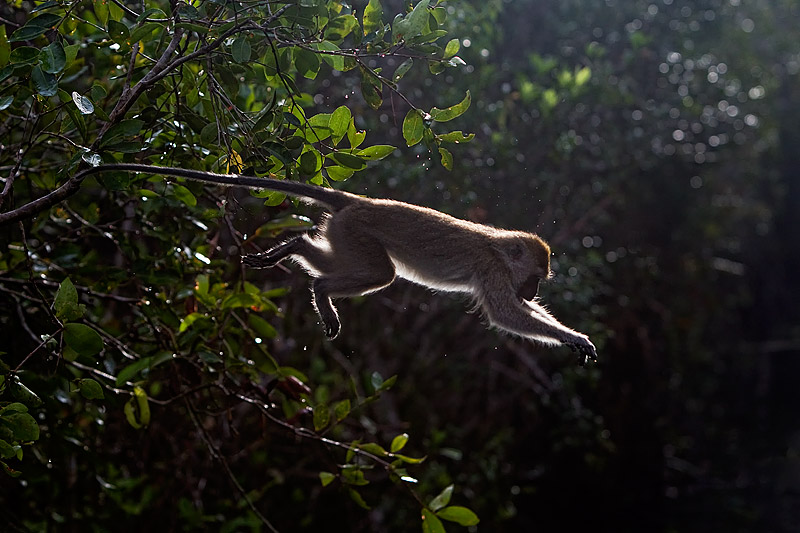
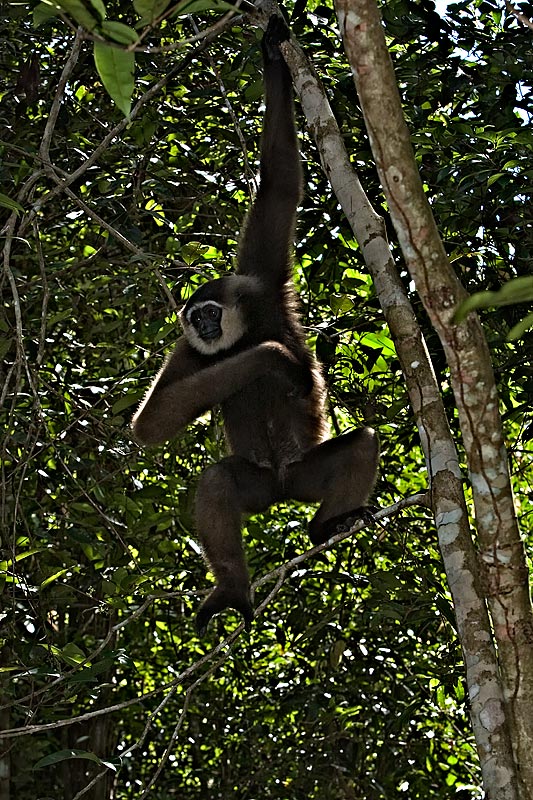
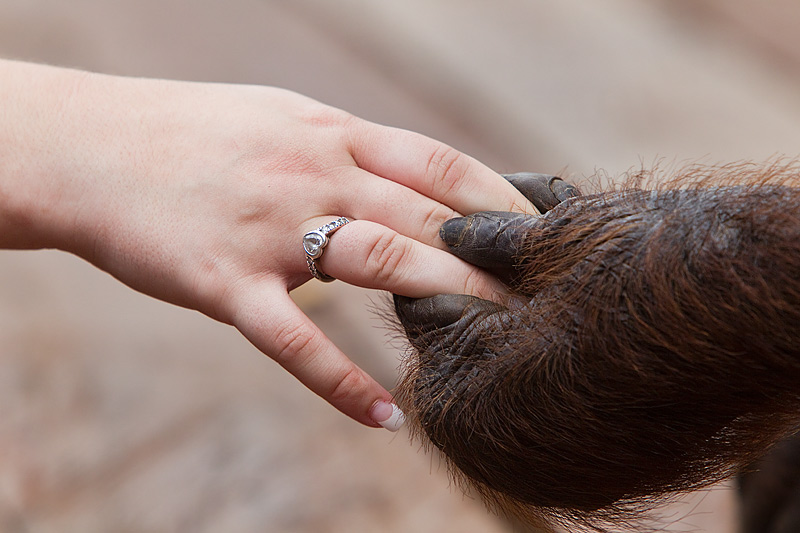
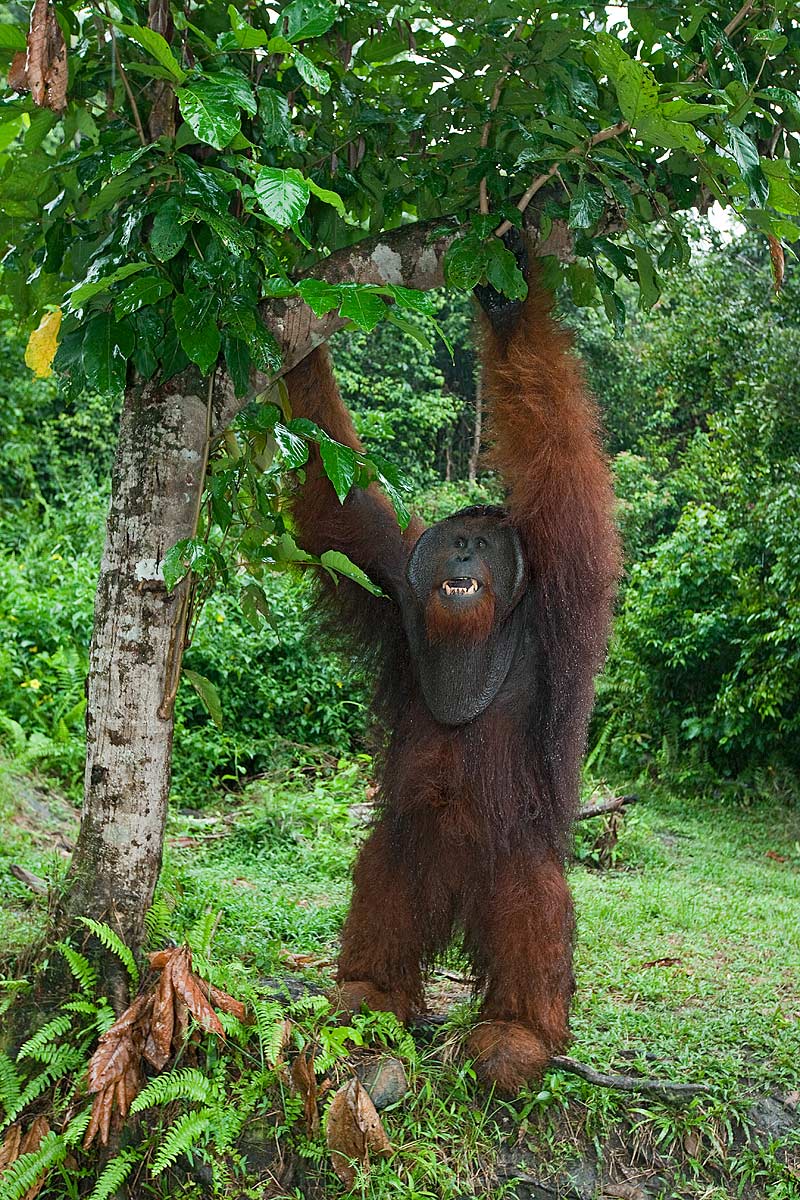
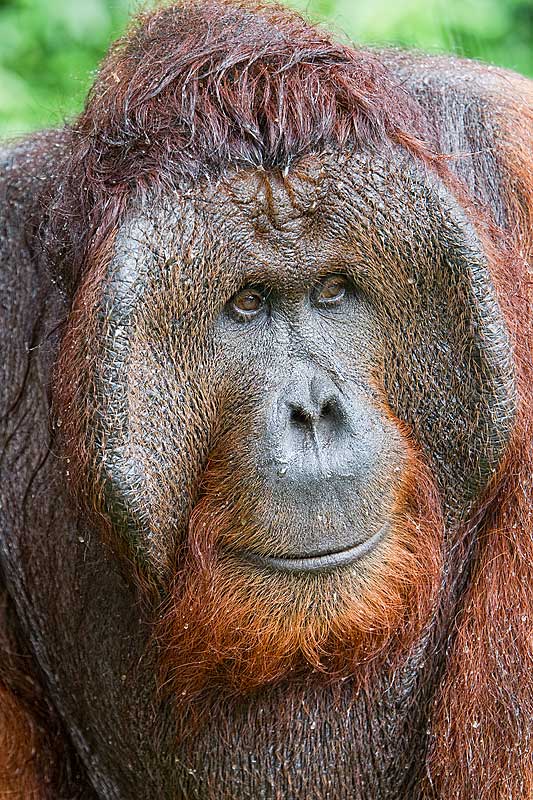
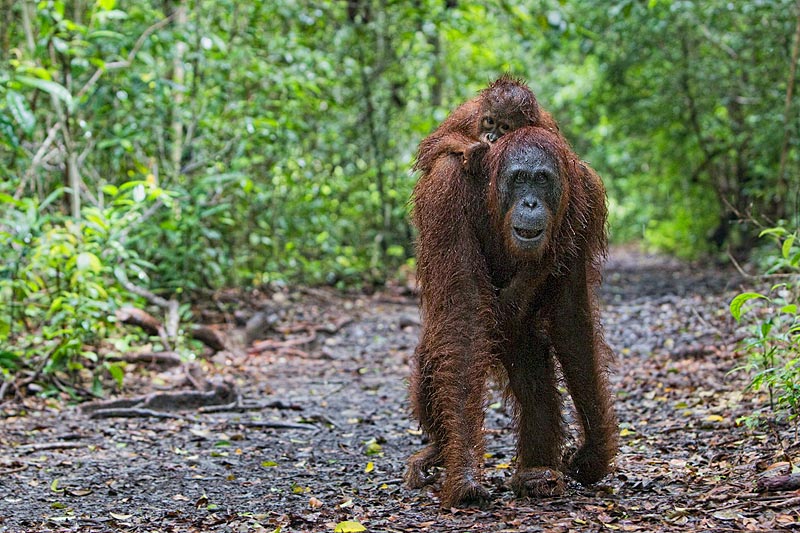
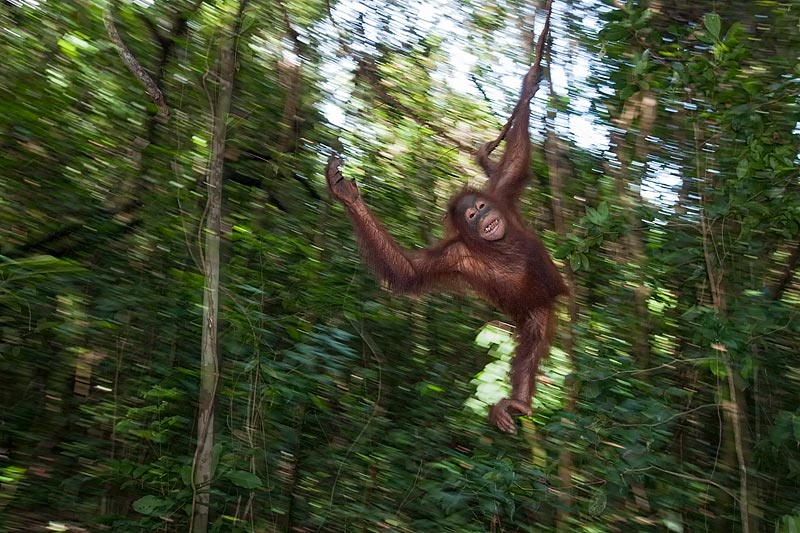
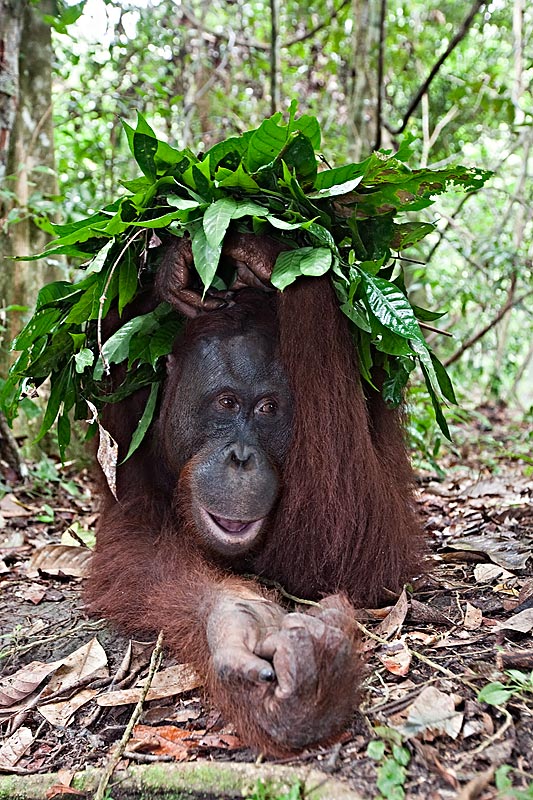
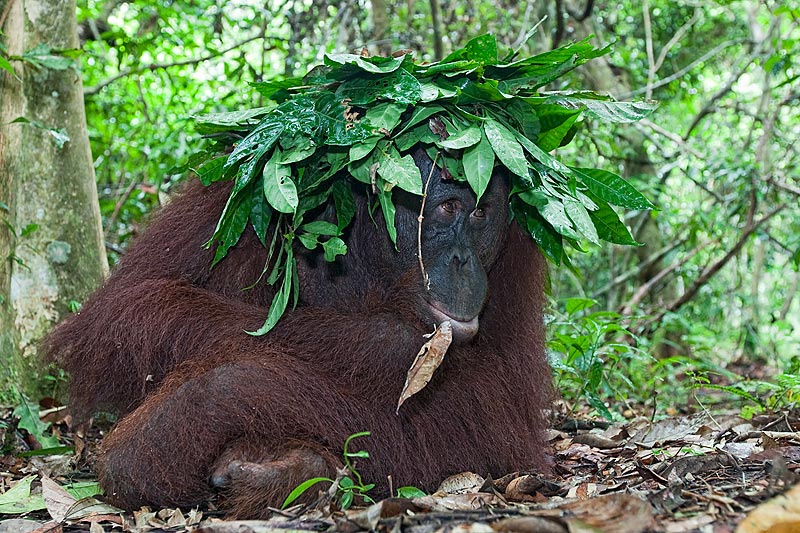
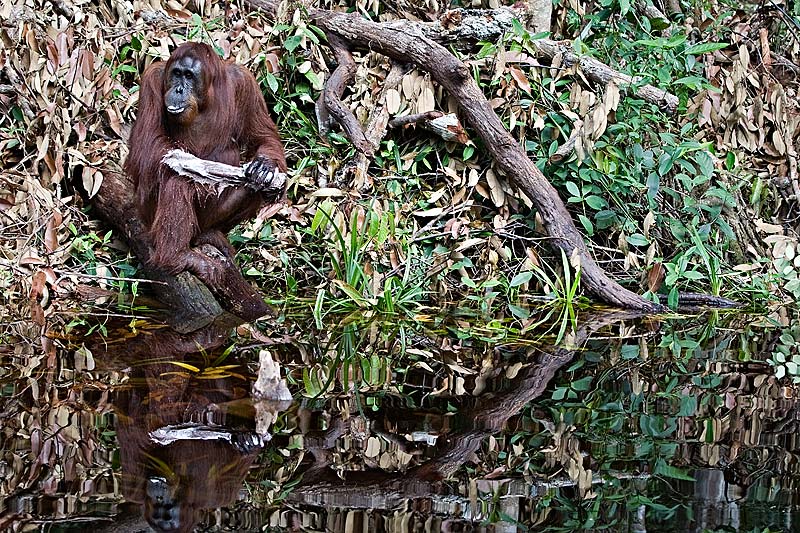
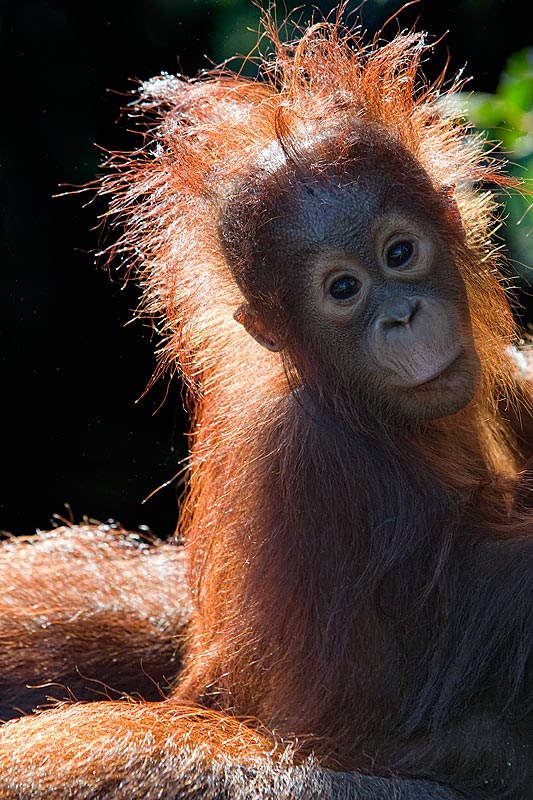
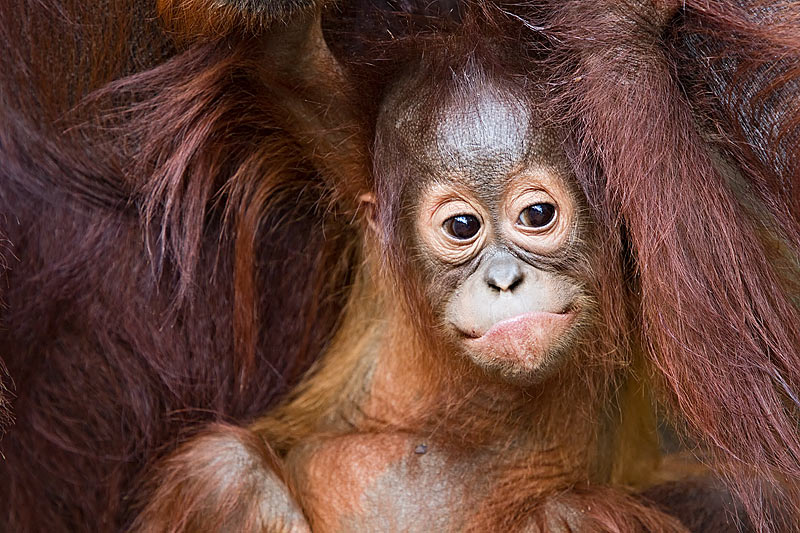
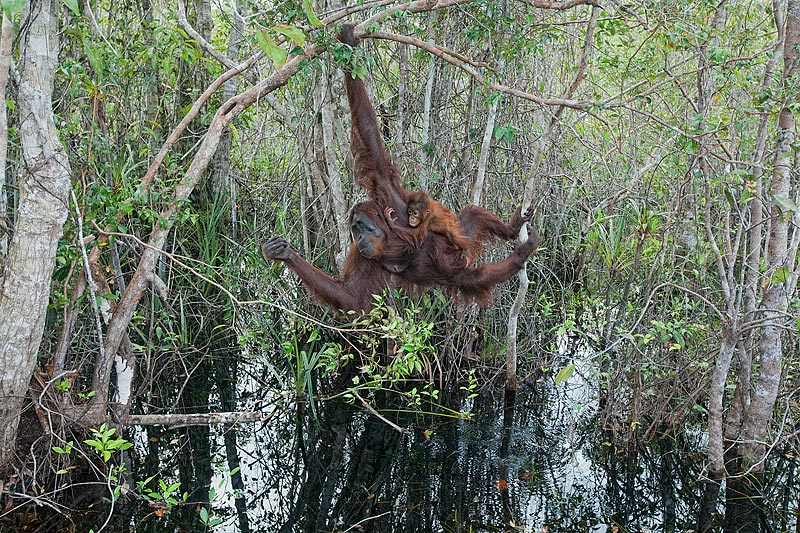
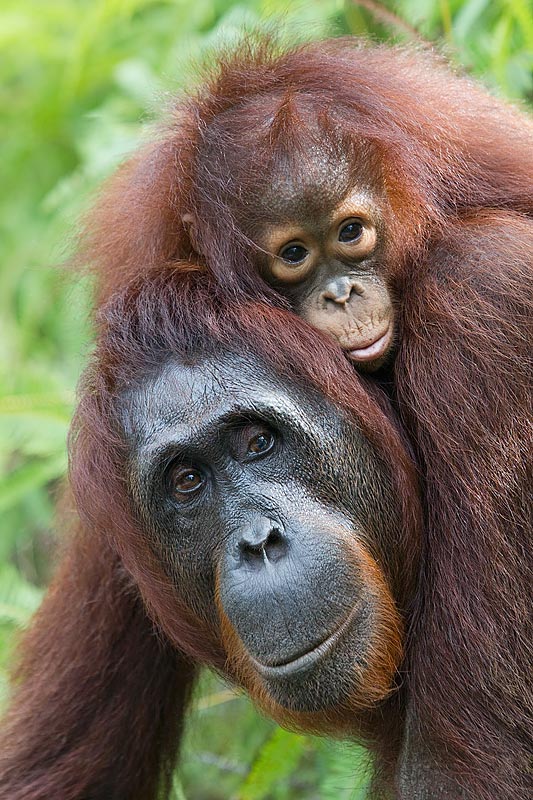
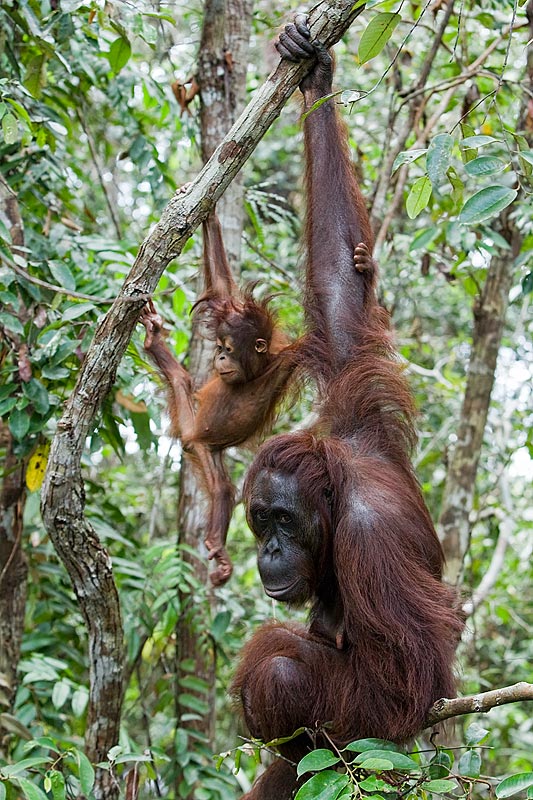
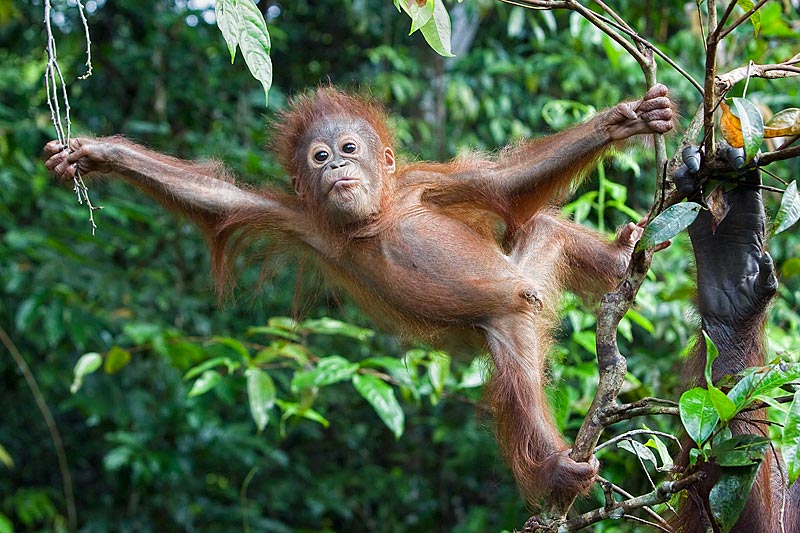
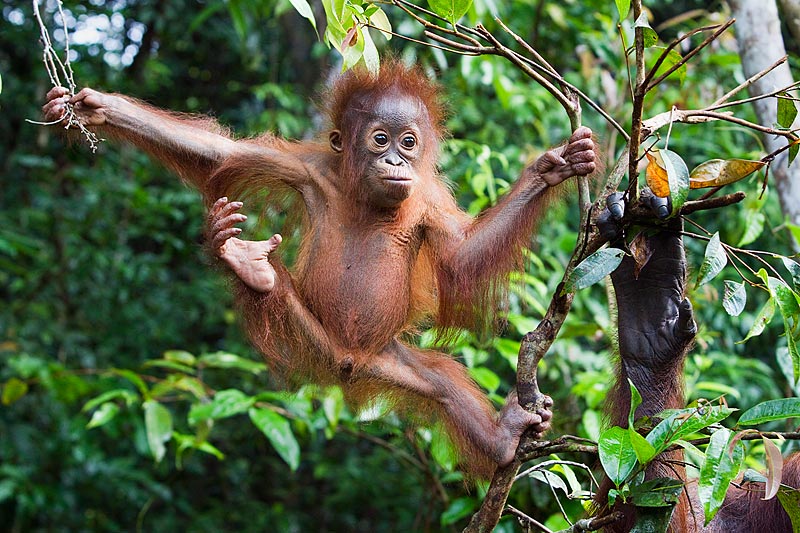
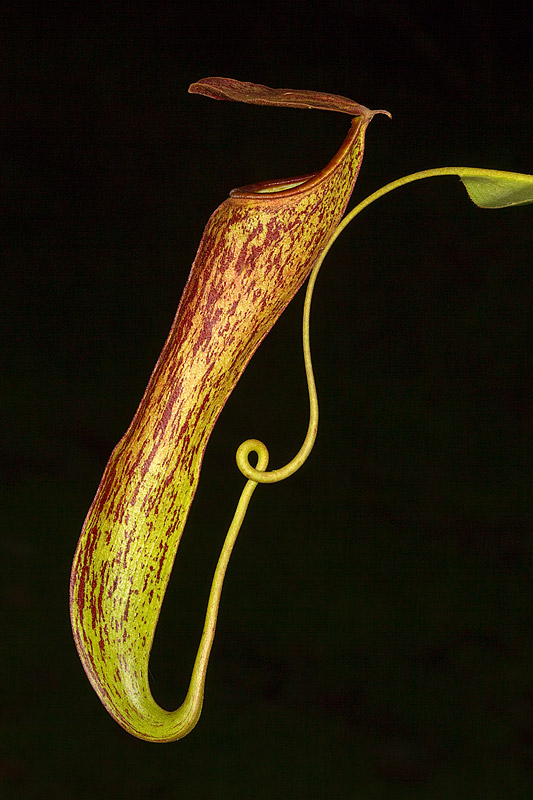
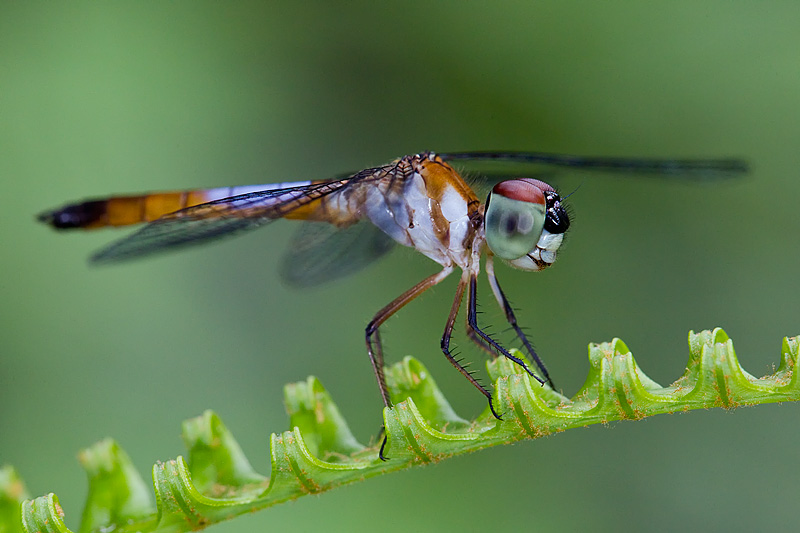
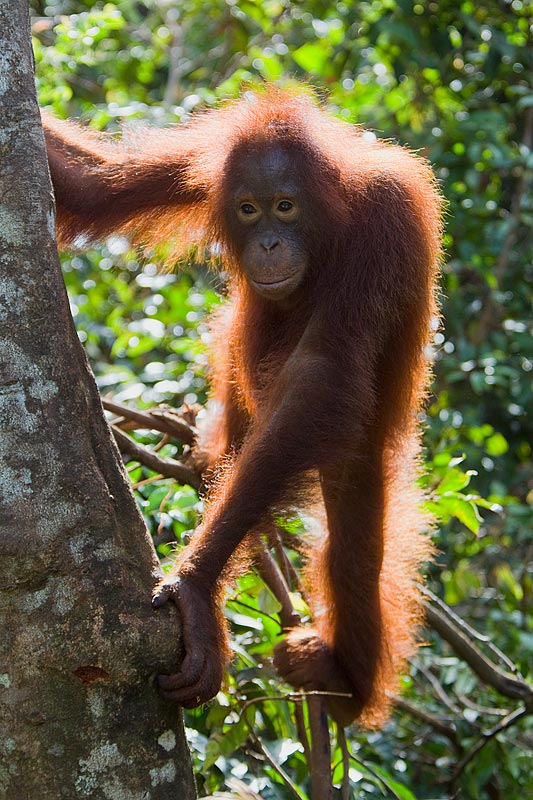
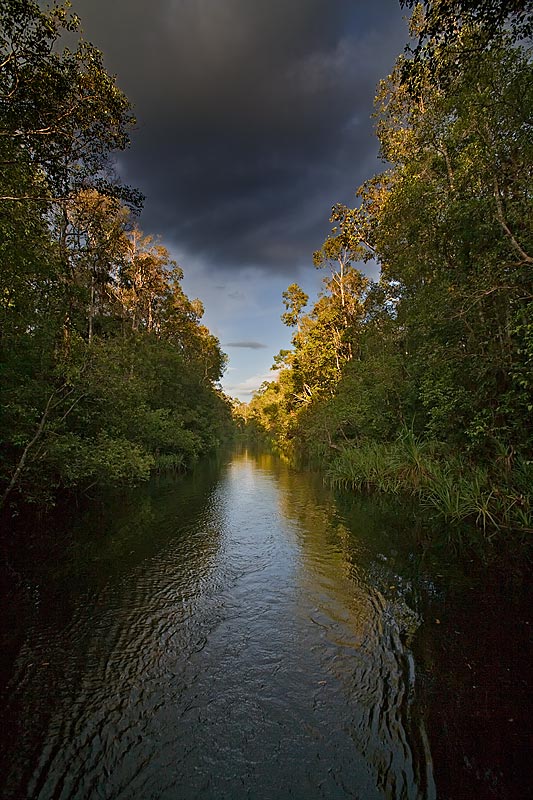
Arthur Morris
December 26, 2010
Incredible as expected. The rain hat stuff is amazing; I have never seen those before. There is just too much amazing stuff for individual kudos. However, the young backlit young lady with the frizzy hair is over the top. And in only four days. A truly superb effort.
Paul Mckenzie
January 3, 2011
Thanks Artie for your generous praise. None of these images would have been possible without all the stuff that I have learnt from your publications.
nilla stennes
December 26, 2010
You have done it again – what amazing pictures. A nice christmas gift from you !!!!
Nilla Stennes
Grace Phan
December 26, 2010
Paul — astounding photos. And I know it’s incredibly challenging to take photos in equatorial rainforest conditions. You’ve managed to make gorgeous, painterly pictures against the normally endlessly monotonous background of the green jungle. My personal favourites are the baby with the mom’s hand, and the dragonfly. You’re an inspiration! Thanks for sharing.
jattinn kochhar
December 26, 2010
Amazing!
Grace Phan
December 26, 2010
I changed my mind: the photo of the orangutan soaping up is my fav. It’s brilliant!!
Beryl McKenzie
December 26, 2010
Beautiful photos. Lovely boat – how many on it? Just you and boatman? Wonderful scenery too. Beryl
otto plantema
December 26, 2010
Really great pictures, Paul;
Give a call, when you publish a book about your trips of last 2 years,
Regards, Otto
Paul Mckenzie
January 3, 2011
Will do!
Frances
December 26, 2010
Thanks for sharing your trip and photos again. Especially love the ones of the babies & the last view of the river.
Gordon Lindsay
December 26, 2010
Brilliant, great Christmas present thanks for sharing, I particularly like the active juvenile motion shot and the mother and baby portrait.
Rebecca Field
December 27, 2010
What an incredible photo journey I have just experienced vicariously. Your talents and drive are palpable!
Thanks to Arthur Morris for sharing!
Paul Mckenzie
January 3, 2011
Thanks Rebecca. I owe Artie a lot. As I have noted before, probably about 75% of everything that I know about taking photos, I know because of Artie’s various publications and an even higher percentage when it comes to post processing skills.
Monkey Man
December 27, 2010
Some of the Orangutans look a lot like me…. great photos by the way!
james menjo
December 27, 2010
great christmass pictures, can we compare with the central africa apes.
Paul Mckenzie
January 3, 2011
I have not travelled yet to the Central and West African countries to see Bonobos and Lowland Gorillas but from a genetic stand point, they are closely related. While loss of habitat is a problem for the latter two species, their main threat comes from the bush meat trade whereas habitat clearence by palm oil companies is the overwhelming culprit being the sharp decline in Orangutan numbers.
Jia Thangsurbkul
December 29, 2010
Shall we short palm oil stocks?? your write up should be published so that everyone knows the effect of these plantation is quite severe to all ecological system!! : )
Paul Mckenzie
January 3, 2011
Not sure about shorting the stocks (I wouldn’t want you to lose money) but I certainly wouldn’t buy any of them. Paul
c k su
December 30, 2010
enjoyable pictures. thanks for sharing. CKS at Oklahoma
Verschueren Yan
January 5, 2011
I read all the comments and I can join them for more than 100%: these pictures are superb of these endangered big ape orangutans. I also look forward to see a book with your encounters. That will be great. You can reached more people to convinced them to protect these tresors. Thanks Yan
Kristen Taylor
March 13, 2011
Thank you for sharing your wonderful photos. We are headed with our 12 year old son to Indonesia in July. We would like to do a similar trip for 3 nights. I would love to know who your guide was and if you have the contact information because it sounds like it is best to contact some of the better English speaking guides in advance (did you find that to be true?). Thanks and any other words of wisdom would be welcome. Kristen
Paul Mckenzie
April 4, 2011
Hi Kristen, I have sent you an e-mail with key contacts and addresses to help you organise your trip. Let me know if I can help you in any other way. Regards, Paul.
Bob
June 14, 2011
Amazing across the board! Other than the 16-35mm, what lenses did you use in Tanjung Puting? I may be traveling there later in the year as part of a 6 month trip to Asia/South America.Thanks!
Paul Mckenzie
June 29, 2011
Hi Bob, I bought a 70-200mm f2.8 IS lens, a 300mm f2.8 IS lens and a 100mm macro lens. You definitely need a 70-200 lens or something similar but the others are not really necessary.
Bob
July 14, 2011
Thanks for the lens advice! We are definitely looking into doing an Orangutan tour into Tanjung Puting. What tour operator did you use? Thanks again!
Mic Comber
July 21, 2011
I will be visiting this park in a few months time and so have been delighted to find this website. Superb photos and a lot of information I am going to find very useful and which will increase my appreciation of what I see. And I have ordered the bok ‘Reflections of Eden.’ Many thanks.
Lucille Murby
April 21, 2014
Hi there – thanks for this fantastic insight into the orangutan. I have shared this information with my 5 year old son. He is doing a project on a rainforest creature for school. He has put a lot of work into it and written lots about habitat, diet, DNA similarities and the destruction of the rainforests. We have added in the part about the 8-year birth cycle today after looking at your article. If we teach our children these things maybe there is a chance that the orangutan (and other endangered species) will survive. I have ordered “Reflections of Eden” and look forward to reading that, too. Thank you again.
Paul Mckenzie
April 21, 2014
Hi Lucille,
Really happy to have helped and am quite touched with what your kid is doing. If there is anything else I can help with, let me know. Paul
Sonja
May 22, 2014
The trip seems soo amazing! We would also love to do a similar one, so could you send us the contact details of your klotok/guide? Thanks a lot! Sonja